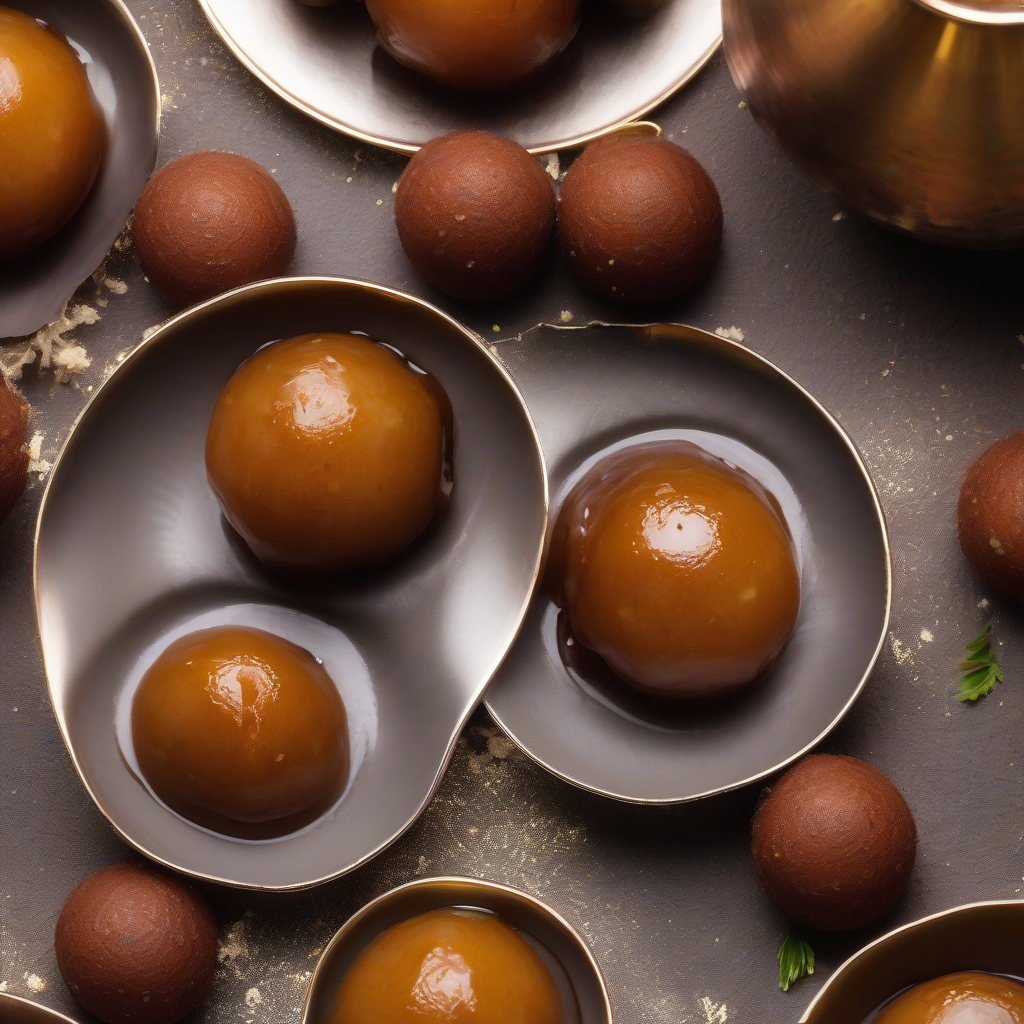Gulab Jamun: Pahari Style – Sweetness from the Hills!
Namaste Dosto! Kem cho? As the cool mountain air starts to nip at our noses, it’s time for some warm, comforting treats. Today, we’re heading to the hills – virtually, of course – to explore a special kind of Gulab Jamun: Pahari Gulab Jamun!
These delicious, melt-in-your-mouth sweets are especially popular in the hilly regions of India, particularly during festivals like Diwali, Dussehra, and even weddings. The chilly weather just begs for something warm and sugary, doesn’t it? Pahari Gulab Jamun are also a staple during the harvest season, a sweet celebration of nature’s bounty.
A Sweet History
Gulab Jamun, in general, has a fascinating history. It’s believed to have originated in medieval Persia, brought to India by Persian rulers. The name “Gulab” comes from the Persian word “Gol” (flower) referring to rose water-scented syrup, and “Jamun” is the Hindi-Urdu word for a local fruit that looks similar in size and shape. Over time, Indians added their own special touch, creating the delightful treat we know and love today. Pahari Gulab Jamun, with its unique texture and flavor, is a regional variation that truly stands out.
Recipe Time!
Preparation Time: 20 minutes
Cooking Time: 30 minutes
Ingredients:
- 200 grams Khoya/Mawa (Dried Evaporated Milk Solids) – freshly grated for a smoother texture
- 50 grams Maida (All-Purpose Flour) – to bind everything together
- 1/4 teaspoon Elaichi Powder (Cardamom Powder) – for that beautiful aroma
- 1/4 teaspoon Baking Soda – makes them light and fluffy
- 2 tablespoons Milk – to knead the dough
- Ghee (Clarified Butter) or Oil – for deep frying
For the Sugar Syrup:
- 2 cups Sugar (Cheeni) – for the perfect sweetness
- 1 cup Water (Paani) – to dissolve the sugar
- 1/2 teaspoon Elaichi Powder (Cardamom Powder) – because we love that fragrance!
- A few strands of Saffron (Kesar) – for color and a touch of luxury
- 1 teaspoon Lemon Juice – to prevent crystallization
Instructions:
- Knead the Dough: In a large bowl, crumble the grated khoya. Add maida, elaichi powder, and baking soda. Mix well. Gradually add milk, a little at a time, and knead into a soft, smooth dough. Don’t over-knead!
-
Shape the Jamuns: Divide the dough into small, equal-sized portions. Roll each portion between your palms to form smooth, crack-free balls. This is important! Cracks can cause them to break while frying.
-
Fry the Jamuns: Heat ghee or oil in a deep pan over low heat. Gently drop a few jamuns into the hot oil. Fry them on low heat, turning occasionally, until they are golden brown on all sides. This takes time, so be patient! Frying on low heat ensures they cook evenly from the inside.
-
Prepare the Sugar Syrup: While the jamuns are frying, prepare the sugar syrup. In a separate pan, combine sugar and water. Bring to a boil, stirring until the sugar dissolves completely. Add elaichi powder, saffron strands, and lemon juice. Simmer for 5-7 minutes, until the syrup slightly thickens. It should be sticky to the touch, but not too thick.
-
Soak the Jamuns: Once the jamuns are golden brown, remove them from the oil and immediately drop them into the warm sugar syrup. Make sure the syrup is warm, not boiling hot. Let them soak in the syrup for at least 2-3 hours, or even overnight, so they absorb all that delicious sweetness.
Tips for Best Results:
- Fresh Khoya is Key: Using fresh, good-quality khoya makes a huge difference in the taste and texture of the jamuns.
- Low and Slow: Fry the jamuns on low heat to ensure they cook evenly and don’t remain raw inside.
- Crack-Free Balls: Make sure the jamuns are smooth and free of cracks before frying.
- Warm Syrup: The sugar syrup should be warm when you add the fried jamuns. This helps them absorb the syrup properly.
Cooking Variations:
- Gas Stove: The traditional method, as described above, works perfectly on a gas stove.
- Induction Stove: Use the same method as the gas stove, adjusting the heat settings as needed.
- Air Fryer: While not traditional, you can air fry Gulab Jamun. Brush the jamuns with ghee and air fry at 350°F (175°C) for 10-12 minutes, flipping halfway through. Keep a close eye on them to prevent burning.
- Oven: Bake at 350°F (175°C) for 15-20 minutes, turning halfway through.
- Pressure Cooker/Slow Cooker/Microwave/Crockpot: I would not recommend using these for this particular recipe, as they are not suited for deep frying or achieving the desired texture.
Nutritional Information (approximate, per serving):
- Calories: 250-300
- Fat: 10-15g
- Carbohydrates: 30-40g
- Protein: 3-5g
Note: These values can vary depending on the specific ingredients and portion sizes.
Serving Suggestions:
Serve these Pahari Gulab Jamun warm or at room temperature. You can garnish them with chopped nuts like pistachios or almonds for an extra touch of elegance. A scoop of vanilla ice cream or a dollop of rabri (sweetened condensed milk) on the side makes it even more decadent!
A Humble Request:
So there you have it – a taste of the Himalayas right in your own kitchen! I urge you to try this recipe at home. It may seem a little daunting at first, but trust me, the sweet reward is well worth the effort. Share these delicious Pahari Gulab Jamun with your family and friends, and spread the joy of Indian sweets! I am sure they will appreciate your delicious offering.
